Verifying a dental lab’s experience in implant restorations is one of the most reliable ways to reduce procurement risk. Labs with a proven track record, certified technicians, and standardized quality controls consistently deliver restorations that fit, function, and last. Knowing how to check these factors ensures that supplier selection is based on evidence, not assumptions.
Procurement teams often struggle to distinguish true implant specialists from general dental service providers. The most effective evaluation criteria include:
- Portfolio and Case Histories → crowns, bridges, and full-arch restorations.
- Years of Operation & Recognition → proven history, affiliations, client retention.
- Technician Qualifications → certified staff, continuous implant-focused training.
- System & Workflow Expertise → Straumann, Nobel Biocare, Zimmer, and digital file handling.
- Quality & Compliance → ISO/FDA/CE certifications, remake rate reduction.
- Client & Peer Feedback → testimonials, repeat customers, professional references.
- Collaboration & Verification → responsiveness, trial cases, sample restorations.
By applying these structured checks, buyers can confidently identify labs with authentic implant expertise. This approach leads to fewer remakes, smoother collaboration, and long-term partnerships with overseas dental labs that deliver predictable and high-quality outcomes.
Why Lab Experience Matters in Implant Restorations
A dental lab’s experience directly shapes the accuracy, durability, and predictability of implant restorations. Labs with a long track record reduce procurement risk by demonstrating proven workflows and accumulated technical know-how. For procurement managers, evaluating experience is often the first filter before considering pricing or logistics.

dental-lab-implant-experience-discussion
How does proven experience influence implant restoration outcomes?
Proven experience improves precision and reduces remakes because technicians can anticipate common issues. For example, experienced labs are familiar with the nuances of implant angulation, emergence profile design, and soft-tissue management in digital models. This allows them to deliver restorations that fit more predictably, saving clinics both time and cost.
What risks arise when working with labs lacking implant expertise?
Labs without implant experience often struggle with margin definition, screw channel alignment, and component compatibility. This can lead to ill-fitting restorations, increased remake rates, and patient dissatisfaction. For overseas buyers, these risks are magnified because resolving errors across borders is costly and time-consuming.
Why do procurement teams prioritize labs with a long track record?
A long track record signals that the lab has managed diverse implant cases and adapted to evolving technologies. Procurement teams view this as proof of resilience and reliability. For instance, one distributor in the Middle East we worked with requested historical implant case data before trial orders; once they saw consistent results across years of production, they felt confident to start regular cooperation.
In short, lab experience not only reduces remake risk but also makes international collaboration more predictable. Buyers know they are choosing a partner who has seen complex cases before and can deliver consistently reliable outcomes.
Reviewing Portfolios and Case Histories
Portfolios and case histories give procurement teams a direct window into a dental lab’s implant experience. Unlike general marketing claims, documented cases show how the lab handles real clinical situations across single units, bridges, and full-arch restorations. A well-prepared portfolio helps buyers verify technical depth, consistency, and adaptability.
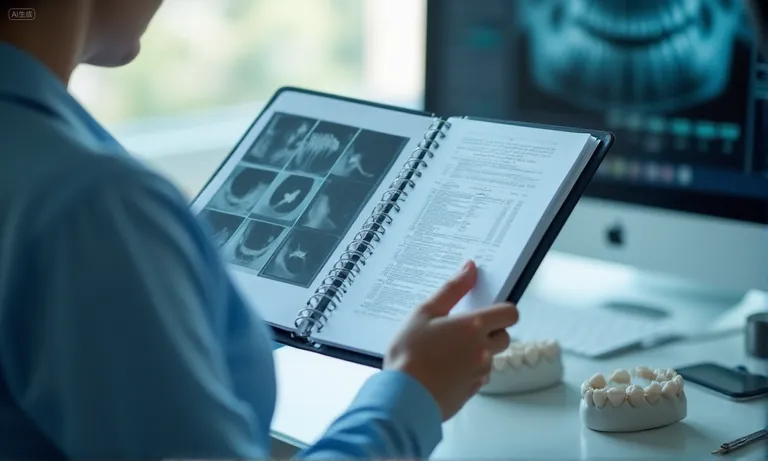
dental-lab-implant-portfolio-case-files
What should you look for in a lab’s portfolio of implant cases?
Procurement managers should expect portfolios to include:
- Anonymized case photos and reports: Respecting patient privacy while showing technical quality.
- Range of indications: Single units, multi-unit bridges, and full-arch frameworks.
- Before-and-after outcomes: Demonstrating improvement in fit, esthetics, and function.
- Error handling: Examples of remakes or corrections, which prove transparency.
This level of detail shows whether a lab is truly experienced or only showcasing limited sample work.
How do single crowns, bridges, and full-arch restorations reflect expertise?
Each restoration type tests different aspects of a lab’s capability. Single crowns reveal margin accuracy and esthetics, bridges test occlusion and interproximal design, and full-arch cases show whether the lab can manage complexity at scale. A lab confident in all three indicates versatility and depth of implant experience.
Why are real case studies important for evaluating implant experience?
Case studies connect technical outcomes to clinical realities. They often highlight the challenge, the lab’s action, and the final result. For example, a European DSO reviewing one of our zirconia full-arch case studies saw that we documented both the design adjustments and the corrective steps taken before final delivery. This reassured them that we could manage complexity transparently and professionally.
Well-documented portfolios and real case studies are therefore the most direct proof of a lab’s implant restoration expertise. They reduce uncertainty for overseas buyers and demonstrate that the lab’s claims are backed by evidence rather than marketing.
Checking Years of Operation and Industry Recognition
Years of implant-focused operation and industry recognition are strong indicators of a lab’s stability and credibility. A lab that has survived regulatory changes, material innovations, and shifting client expectations demonstrates resilience that newer labs may lack. Procurement teams use these signals to assess whether a supplier can be trusted for long-term implant collaboration.
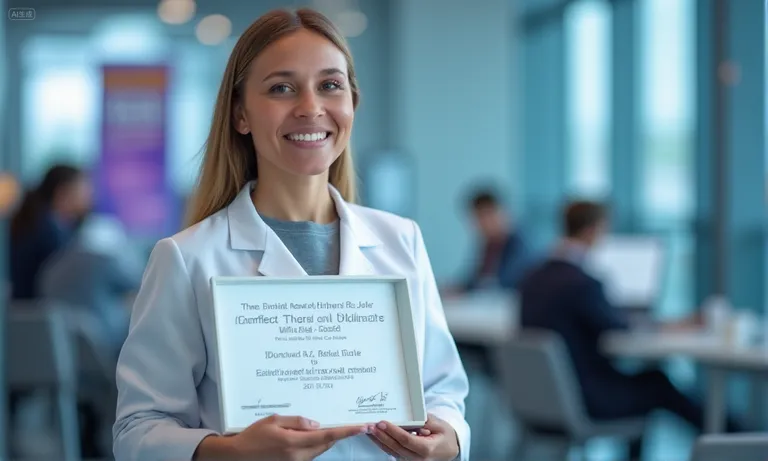
dental-lab-industry-recognition-awards
How many years of implant-focused experience should a lab demonstrate?
Procurement managers typically look for at least 5–10 years of implant-specific work, not just general dental experience. This period usually means the lab has seen a range of clinical indications, handled both simple and complex cases, and developed standardized workflows. A shorter history may indicate limited exposure to variation, which increases procurement risk.
Why does industry recognition or association membership matter?
Recognition through awards, publications, or membership in professional associations adds external validation. When a lab is affiliated with organizations like the International Team for Implantology (ITI) or participates in regional implant congresses, it signals engagement with the broader clinical community. Buyers see this as proof that the lab keeps up with evolving standards and best practices.
What do long-term DSO partnerships reveal about lab stability?
Long-term relationships with DSOs or large distributor clients are practical signs of reliability. Maintaining multi-year contracts demonstrates that the lab consistently delivers on turnaround, quality, and collaboration. For example, a North American DSO we worked with maintained a continuous partnership for over five years, citing stable remake rates and predictable logistics as reasons for renewal. Such partnerships prove that the lab can meet the high-volume, repeat demands of organizational buyers.
Together, years of experience, external recognition, and long-term partnerships form a strong credibility triangle. They reassure procurement teams that the lab is not only experienced but also validated and trusted by the market.
Verifying Technician Qualifications and Training
The expertise of dental technicians is a decisive factor in implant restoration quality. Even the most advanced digital systems cannot compensate for insufficient technician skills. Procurement teams must evaluate whether a lab’s technicians are certified, continuously trained, and allocated in ratios that ensure personalized support for complex cases.

dental-lab-technician-qualification-training
Why do certified technicians matter in implant restorations?
Certified technicians demonstrate that they have undergone formal training in implant workflows. Certification proves competence in handling implant libraries, designing abutments, and integrating CAD/CAM processes. For buyers, this reduces the risk of errors during critical steps such as screw channel design or occlusal adjustment, which directly impact patient comfort.
How does continuing education reflect up-to-date expertise?
Ongoing education is essential because implant technologies evolve quickly. Buyers should check if the lab ensures:
- Annual training sessions: Keeping technicians aligned with system updates.
- Workshops with implant manufacturers: Ensuring precision with Straumann, Nobel Biocare, or MIS systems.
- Cross-training in CAD/CAM platforms: Building flexibility across design and milling tools.
- Updates on regulatory changes: Preventing compliance gaps in international deliveries.
This commitment proves that the lab invests in keeping its expertise current.
What technician-to-case ratio indicates strong technical support?
The ratio of technicians to cases reflects whether a lab can provide sufficient attention per restoration.
- Low ratio (1 tech : 5–10 cases per week) → personalized review, higher accuracy, better support for complex implants.
- High ratio (1 tech : 20+ cases per week) → risk of rushed work, less time for quality checks.
Procurement managers often see a lower technician-to-case ratio as a sign of deeper involvement and more reliable outcomes.
A lab with certified technicians, structured training, and balanced workloads demonstrates real implant expertise. This reassures buyers that technical competence supports not only precision but also long-term reliability in overseas collaboration.
Confirming Experience with Different Implant Systems
System compatibility is one of the most practical indicators of implant expertise. A lab that works fluently with multiple implant systems shows flexibility, precision, and a reduced risk of errors. Procurement managers know that experience across brands like Straumann, Nobel Biocare, Zimmer, MIS, and BioHorizons ensures restorations will fit seamlessly into the clinical workflow without costly adjustments.
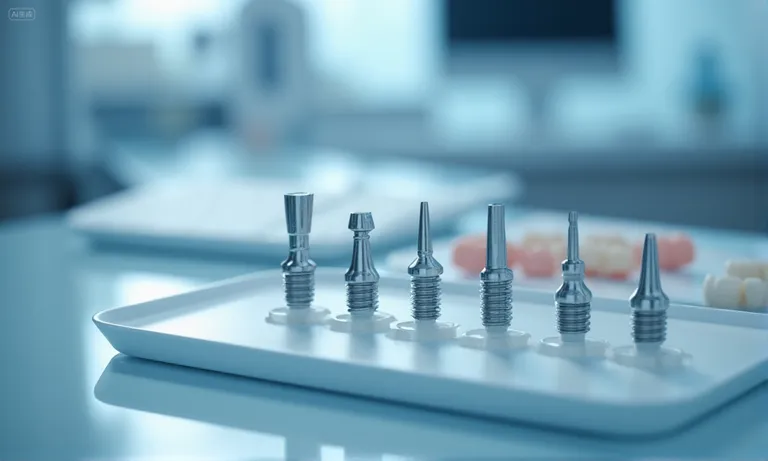
dental-lab-multi-implant-system-experience
Why is system compatibility with Straumann, Nobel Biocare, or Zimmer critical?
These global systems dominate clinical use, and a lab’s ability to deliver restorations that align perfectly with their libraries ensures surgical-restorative harmony. Misfits can cause complications such as screw loosening or peri-implant stress. That’s why procurement teams often ask whether the lab has direct experience producing abutments and crowns tailored for these major systems.
How does multi-system experience improve restorative precision?
- Flexibility in case planning: Labs can adapt to whichever implant system the clinician prefers.
- Reduced chairside adjustments: Accurate digital libraries and milling protocols minimize intraoral corrections.
- Fewer remakes: Familiarity with torque, angulation, and connection specifics across systems lowers failure rates.
- Scalability across geographies: Distributors serving multiple markets can rely on one lab partner instead of sourcing regionally.
What questions should procurement teams ask about implant system expertise?
- Do you provide validated digital libraries for Straumann, Nobel Biocare, Zimmer, MIS, and BioHorizons?
- How often are your libraries updated to align with manufacturer changes?
- Can you handle full-arch restorations across different implant systems?
- What is your historical remake rate by implant brand?
By confirming multi-system expertise, procurement managers reduce the likelihood of costly errors and gain assurance that the lab can support diverse clinical demands. For global sourcing, this breadth of experience is often the difference between smooth collaboration and recurring operational friction.
Evaluating Quality Control and Standardized Processes
Quality assurance (QA) is where implant restoration experience translates into measurable reliability. Even highly skilled technicians and advanced systems cannot guarantee consistency without structured processes. For procurement managers, verifying a lab’s QA and standardization practices is essential to minimizing remake rates and ensuring predictable global deliveries.
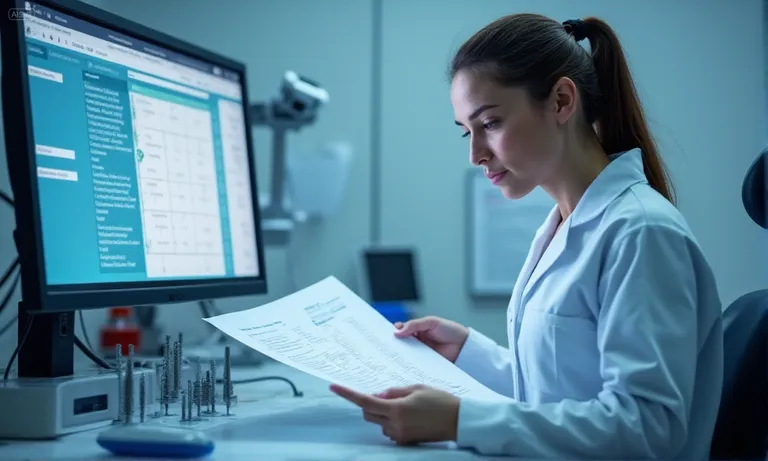
dental-lab-quality-control-processes
Which QA steps reduce remake rates in implant restorations?
- Incoming inspection of digital scans or physical impressions to flag errors early.
- Design validation against implant libraries before milling or printing.
- Trial fitting on analog models or digital simulations to detect misalignments.
- Final inspection of occlusion, contact points, and screw channel alignment.
- Documentation of results to provide transparency for procurement and clients.
Labs with repeatable QA checkpoints at every stage typically achieve remake rates below industry averages, a critical metric for large-scale buyers.
How do ISO, FDA, or CE certifications validate a lab’s reliability?
Certifications prove that the lab is audited by external authorities and adheres to global manufacturing standards.
- ISO 13485 confirms medical device quality management.
- FDA registration indicates compliance for exports to the U.S.
- CE marking ensures European market access.
These certifications signal not just regulatory approval, but a culture of disciplined process control that procurement teams can rely on for international sourcing.
Why does process standardization matter in global procurement?
- Consistency across orders: Every restoration follows the same documented workflow.
- Predictable delivery timelines: Standardization reduces variability in production.
- Scalability for distributors: Clients serving multiple regions can expect identical outcomes.
- Lower training gaps: New technicians can quickly align with documented SOPs.
For procurement teams, standardized workflows reduce uncertainty, ensuring implant restorations remain accurate and repeatable no matter the order volume or destination.
Labs that integrate QA steps, certifications, and process standardization provide the operational security global buyers need. This alignment of expertise with reliability makes them strong long-term partners for implant restorations.
Using Client Feedback and References
Client feedback is often the most credible validation of a dental lab’s implant experience. Certifications and case portfolios can show technical ability, but it is actual client satisfaction that reveals whether the lab consistently delivers reliable restorations. For procurement teams, reviews, repeat orders, and references are powerful indicators of trustworthiness.

dental-lab-client-feedback-references
How do reviews and testimonials reveal implant restoration experience?
Written testimonials and online reviews often highlight practical factors: delivery reliability, remake frequency, and communication responsiveness. Positive comments across these areas suggest the lab has not only technical skills but also operational maturity. Procurement teams can filter meaningful reviews by looking for repeated mentions of implant-specific strengths rather than generic dental services.
Why are repeat clients strong proof of a lab’s expertise?
A distributor once trialed a new lab for a series of zirconia implant crowns. The results matched digital specifications, delivery was on time, and remake requests were minimal. Impressed, the distributor expanded to bridges and later full-arch cases, eventually making the lab a long-term partner. This progression illustrates that repeat business reflects satisfaction with both quality and workflow—evidence stronger than any single testimonial.
What can peer recommendations and references confirm?
- Case complexity handled: From single units to full-arch restorations.
- Consistency: Ability to maintain accuracy across repeat orders.
- Support quality: Responsiveness when complications arise.
- Market readiness: Whether the lab adapts well to international shipping or compliance standards.
When references confirm positive experiences across these dimensions, procurement managers gain confidence that the lab’s claims are substantiated by peers, not just marketing.
Collecting and validating client feedback turns procurement evaluation into evidence-based decision-making. Labs that build long-term relationships with clients naturally demonstrate the kind of trust and reliability procurement professionals seek in implant restoration sourcing.
Communication and Collaboration as Experience Indicators
A lab’s experience is not only reflected in the restorations it produces but also in the way it communicates and collaborates with procurement teams. Smooth coordination, timely updates, and transparency are practical signals of maturity that can make or break international partnerships. For buyers, evaluating a lab’s communication habits is as important as reviewing technical expertise.
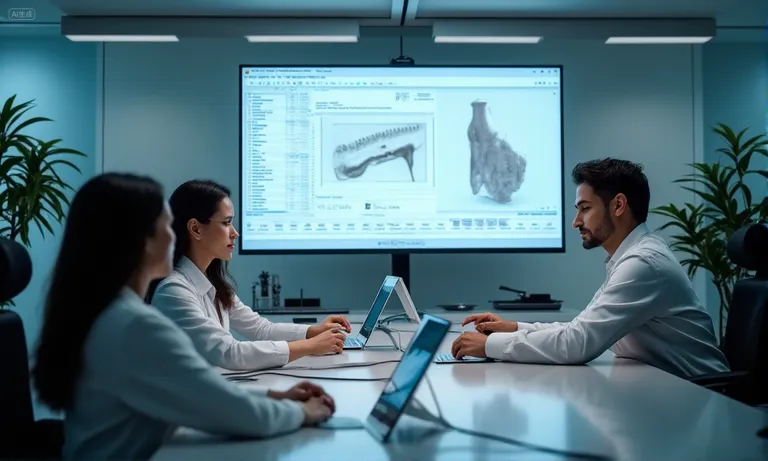
dental-lab-communication-collaboration
How does responsiveness reflect real-world collaboration experience?
Response time is one of the clearest signs of operational discipline. Experienced labs typically acknowledge queries within hours, not days, ensuring that issues like STL transfer errors or implant library mismatches do not delay production. Quick, structured responses demonstrate that the lab has handled similar cases before and built workflows for predictable resolution.
Why is a dedicated contact or account manager valuable?
- Single point of accountability: No confusion over who to contact.
- Context retention: The manager remembers past projects and requirements.
- Proactive updates: Procurement teams receive reminders on deadlines or shipping status.
- Problem-solving efficiency: Direct escalation when urgent implant cases need adjustments.
A dedicated contact ensures the collaboration is not transactional but relationship-driven, aligning with long-term supply chain goals.
What role does transparency in communication play in long-term success?
Transparent labs share more than status updates—they explain risks, suggest alternatives, and provide documentation of QA checks. For example, if a scan is incomplete, a transparent partner does not proceed blindly but flags the issue with clear guidance. This culture of openness builds trust and reduces costly remakes, especially in cross-border projects where miscommunication can lead to delays.
Procurement teams should treat communication as a measurable part of lab experience. Labs that respond quickly, assign dedicated managers, and practice transparent collaboration signal readiness for international partnerships. Raytops Dental Lab, for example, emphasizes proactive communication with overseas clients, ensuring implant restorations meet both technical and logistical expectations.
Practical Ways to Verify a Lab’s Claims
Procurement managers often hear strong promises from dental labs, but verification requires evidence. Instead of relying only on marketing, practical checks—trial cases, sample restorations, and direct technician discussions—turn claims into measurable performance. These steps help buyers confirm whether a lab can truly deliver implant restorations with precision and consistency.
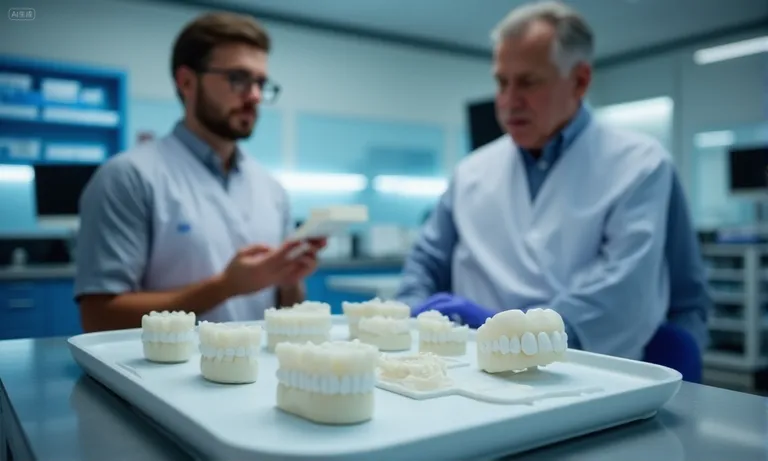
dental-lab-trial-cases-sample-restorations
Should procurement teams request trial or calibration cases?
- Start small: Request one or two single-unit implant crowns to test digital workflow and delivery accuracy.
- Measure turnaround: Check how quickly the lab delivers against agreed timelines.
- Evaluate fit: Assess whether the restoration seats properly without adjustments.
- Track communication: Note responsiveness during file submission and feedback.
Trial cases serve as low-risk calibration exercises, revealing how a lab performs before committing to larger orders.
How can sample restorations demonstrate true implant expertise?
Sample products—whether zirconia crowns or titanium abutments—are tangible evidence of technical competence. Examining margins, occlusal anatomy, and surface finish shows if the lab can achieve the precision implants demand. When paired with digital design files, samples also confirm whether CAD/CAM data is faithfully translated into restorations, avoiding costly mismatches later in production.
Why are direct discussions with technicians useful in validation?
- Process transparency: Technicians can explain step-by-step how implant cases are handled.
- Skill depth: Buyers can verify certifications and training backgrounds.
- Problem-solving mindset: Conversations reveal whether the lab anticipates complications and offers solutions.
- Realistic expectations: Direct exchanges prevent overselling and help align on achievable outcomes.
Speaking directly with the technical team provides confidence that the lab’s capabilities are not just advertised but embedded in daily operations.
Practical validation transforms procurement from guesswork into evidence-based decision-making. Labs willing to provide trial cases, samples, and open technician access prove they have nothing to hide and much to offer in long-term implant restoration partnerships.
Conclusion
Verifying a dental lab’s experience in implant restorations is not about taking claims at face value but about testing, reviewing, and confirming capabilities. By examining portfolios, technician training, system compatibility, and communication practices, procurement teams can separate truly experienced partners from general service providers. Practical steps such as trial cases and sample restorations provide evidence that builds trust. Collaborating with an overseas dental lab that combines technical expertise with transparent processes ensures fewer risks, predictable quality, and a smoother supply chain for implant restorations that consistently meet clinical and business expectations.


